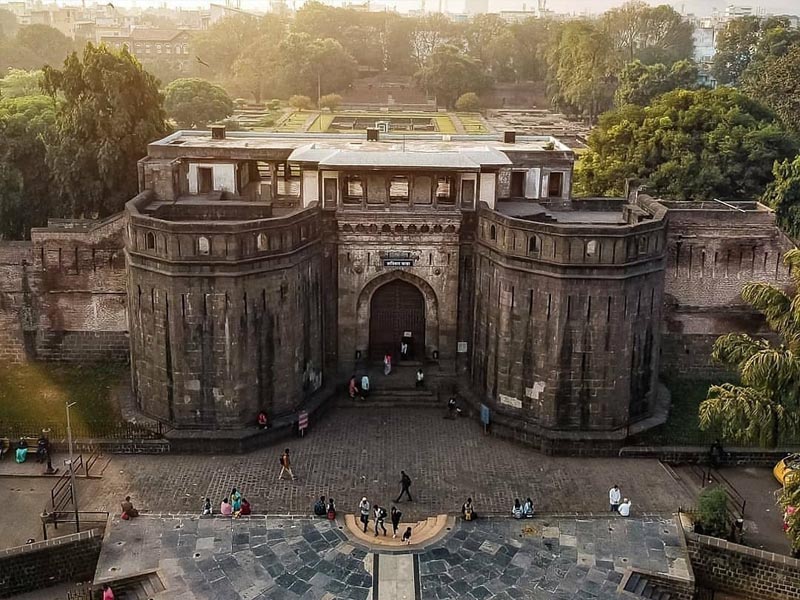🇮🇳 FACTS ABOUT INDIA 🇮🇳
Shaniwar Wada is a historical fortification in the city of Pune, India.
Peshwa Baji Rao I, prime minister to Chattrapati Shahu, laid the ceremonial foundation of his own residence on Saturday, 10 January 1730. It was named Shaniwar Wada from the Marathi words Shaniwar (Saturday) and Wada (a general term for any residence complex). Teak was imported from the jungles of Junnar, stone was brought from the nearby quarries of Chinchwad, and Lime (mineral) was brought from the lime-belts of Jejuri. Shaniwarwada was completed in 1732, at a total cost of Rs. 16,110, a very large sum at that time.
The Shaniwar Wada was normally the seven-story capital building of the Peshwas of the Maratha Empire. It was supposed to be made entirely of stone but after the completion of the base floor or the first story, the people of Satara (the national capital) complained to the Shahu (King) saying that a stone monument can be sanctioned and built only by the Shahu (King) himself and not the Peshwas.
Following this, an official letter was written to the Peshwas stating that the remaining building had to be made of brick and not stone. Even today if you visit and see the walls carefully, they are partly made of stone and partly by bricks.
The Wada was then completed and upon being attacked by the British Artillery 90 years later, all the top six stories collapsed leaving only the stone base, which was immune to the British artillery.
Hence only the stone base of the Shaniwar Wada remains and can be seen even today in the older parts of Pune.
By 1758, at least a thousand people lived in the fort. On 27 February 1828, a great fire started inside the palace complex. The conflagration raged for seven days. Only the heavy granite ramparts, strong teak gateways and deep foundations and ruins of the buildings within the fort survived.
🛕 VEDIK GYAN
BRAHMA NOT WORSHIPPED IN TEMPLES?
When Brahma was creating the universe, He made a female deity known as *Shatarupa* (one with a hundred beautiful forms). Brahma became immediately infatuated with Her. Shatarupa moved in various directions to avoid the gaze of Brahmā. But wherever She went, Brahma developed a head. Thus, Brahma developed five heads, one on each side and one above the others. In order to control Brahma, Shiva cut off one of the heads. Also, Shiva felt that Shatarupa was Brahmā’s daughter, having been created by Him. Therefore, Shiva determined, it was wrong for Brahmā to become obsessed with Her. He directed that there be no proper worship on earth for the “unholy” Brahmā.
According to another legend, Brahma is not worshiped because of a curse by the great sage Brahmarishi Bhrigu. Once a great fire-sacrifice (yajna) was being organised on Earth with Bhrigu being the high priest. It was decided that the greatest among all Gods would be made the presiding deity. Bhrigu then set off to find the greatest among the Trimurti. When he went to Brahma, he was so immersed in the music played by Saraswati that he could hardly hear Bhrigu’s calls. The enraged Bhrigu then cursed Brahma that no person on Earth would ever invoke him or worship him again.
There are very few temples dedicated to Brahma alone : Pushkar temple in Rajasthan
LEARN Sanskrit
Tushar तुषार : Chilly, cold or frost. Tushar also refers to rain, ice or winter season
*************
Click here to join:
https://t.me/joinchat/llGA9DGZF9xmMDc1
 |
Ms. Pooja, |


